以下是基于SpringBoot2.2.6环境
直接从DispatcherServlet的核心方法说起:
protected void doDispatch(HttpServletRequest request, HttpServletResponse response) throws Exception {
// ...
mappedHandler = getHandler(processedRequest);
// ...
HandlerAdapter ha = getHandlerAdapter(mappedHandler.getHandler());
// ...
mv = ha.handle(processedRequest, response, mappedHandler.getHandler());
// ...
mappedHandler.applyPostHandle(processedRequest, response, mv);
// ...
processDispatchResult(processedRequest, response, mappedHandler, mv, dispatchException);
}- 获取HandlerExecutionChain对象
1.1 HandlerExecutionChain对象获取
HandlerExecutionChain mappedHandler = getHandler(processedRequest)。
@Nullable
protected HandlerExecutionChain getHandler(HttpServletRequest request) throws Exception {
if (this.handlerMappings != null) {
for (HandlerMapping mapping : this.handlerMappings) {
HandlerExecutionChain handler = mapping.getHandler(request);
if (handler != null) {
return handler;
}
}
}
return null;
}this.handlerMappings属性值信息:

基本上我们的所有请求(Controller)都是是会匹配到
RequestMappingHanlderMapping。
1.2 类
RequestMappingHandlerMapping
public final HandlerExecutionChain getHandler(HttpServletRequest request) throws Exception {
Object handler = getHandlerInternal(request);
if (handler == null) {
handler = getDefaultHandler();
}
if (handler == null) {
return null;
}
// Bean name or resolved handler?
if (handler instanceof String) {
String handlerName = (String) handler;
handler = obtainApplicationContext().getBean(handlerName);
}
HandlerExecutionChain executionChain = getHandlerExecutionChain(handler, request);
if (logger.isTraceEnabled()) {
logger.trace("Mapped to " + handler);
}
else if (logger.isDebugEnabled() && !request.getDispatcherType().equals(DispatcherType.ASYNC)) {
logger.debug("Mapped to " + executionChain.getHandler());
}
if (hasCorsConfigurationSource(handler) || CorsUtils.isPreFlightRequest(request)) {
CorsConfiguration config = (this.corsConfigurationSource != null ? this.corsConfigurationSource.getCorsConfiguration(request) : null);
CorsConfiguration handlerConfig = getCorsConfiguration(handler, request);
config = (config != null ? config.combine(handlerConfig) : handlerConfig);
executionChain = getCorsHandlerExecutionChain(request, executionChain, config);
}
return executionChain;
}
1.3 继续再进入getHandlerInternal方法(
RequestMappingHandlerMapping.java)
@Override
protected HandlerMethod getHandlerInternal(HttpServletRequest request) throws Exception {
request.removeAttribute(PRODUCIBLE_MEDIA_TYPES_ATTRIBUTE);
try {
return super.getHandlerInternal(request);
}
finally {
ProducesRequestCondition.clearMediaTypesAttribute(request);
}
}1.4 继续进入super.getHandlerInternal()方法。
@Override
protected HandlerMethod getHandlerInternal(HttpServletRequest request) throws Exception {
String lookupPath = getUrlPathHelper().getLookupPathForRequest(request);
request.setAttribute(LOOKUP_PATH, lookupPath);
this.mappingRegistry.acquireReadLock();
try {
HandlerMethod handlerMethod = lookupHandlerMethod(lookupPath, request);
return (handlerMethod != null ? handlerMethod.createWithResolvedBean() : null);
}
finally {
this.mappingRegistry.releaseReadLock();
}
}1.5 继续进入lookupHandlerMethod()方法,查找HanlderMethod()。
@Override
protected HandlerMethod getHandlerInternal(HttpServletRequest request) throws Exception {
String lookupPath = getUrlPathHelper().getLookupPathForRequest(request);
request.setAttribute(LOOKUP_PATH, lookupPath);
this.mappingRegistry.acquireReadLock();
try {
HandlerMethod handlerMethod = lookupHandlerMethod(lookupPath, request);
return (handlerMethod != null ? handlerMethod.createWithResolvedBean() : null);
}
finally {
this.mappingRegistry.releaseReadLock();
}
}1.6 继续进入lookupHandlerMethod()方法:
protected HandlerMethod lookupHandlerMethod(String lookupPath, HttpServletRequest request) throws Exception {
List<Match> matches = new ArrayList<>();
List<T> directPathMatches = this.mappingRegistry.getMappingsByUrl(lookupPath);
if (directPathMatches != null) {
addMatchingMappings(directPathMatches, matches, request);
}
if (matches.isEmpty()) {
// No choice but to go through all mappings...
addMatchingMappings(this.mappingRegistry.getMappings().keySet(), matches, request);
}
if (!matches.isEmpty()) {
Match bestMatch = matches.get(0);
// ...
request.setAttribute(BEST_MATCHING_HANDLER_ATTRIBUTE, bestMatch.handlerMethod);
handleMatch(bestMatch.mapping, lookupPath, request);
return bestMatch.handlerMethod;
}
else {
return handleNoMatch(this.mappingRegistry.getMappings().keySet(), lookupPath, request);
}
}这里找出最合适的HandlerMethod。
List<T> directPathMatches = this.mappingRegistry.getMappingsByUrl(lookupPath);
这行代码中的this.mappingRegistry 是个MappingRegistry对象我们看看我们的Controller是怎么与之关联在一起的:
在WebMvcAutoConfiguration自动装配类中有如下@Bean
@Bean
@Primary
@Override
public RequestMappingHandlerMapping requestMappingHandlerMapping(
@Qualifier("mvcContentNegotiationManager") ContentNegotiationManager contentNegotiationManager,
@Qualifier("mvcConversionService") FormattingConversionService conversionService,
@Qualifier("mvcResourceUrlProvider") ResourceUrlProvider resourceUrlProvider) {
// Must be @Primary for MvcUriComponentsBuilder to work
return super.requestMappingHandlerMapping(contentNegotiationManager, conversionService,
resourceUrlProvider);
}super.requestMappingHandlerMapping方法:
@Bean
@SuppressWarnings("deprecation")
public RequestMappingHandlerMapping requestMappingHandlerMapping(
@Qualifier("mvcContentNegotiationManager") ContentNegotiationManager contentNegotiationManager,
@Qualifier("mvcConversionService") FormattingConversionService conversionService,
@Qualifier("mvcResourceUrlProvider") ResourceUrlProvider resourceUrlProvider) {
RequestMappingHandlerMapping mapping = createRequestMappingHandlerMapping();
mapping.setOrder(0);
// 设置系统中的或自定义的拦截器
mapping.setInterceptors(getInterceptors(conversionService, resourceUrlProvider));
mapping.setContentNegotiationManager(contentNegotiationManager);
mapping.setCorsConfigurations(getCorsConfigurations());
// ...
return mapping;
}
protected RequestMappingHandlerMapping createRequestMappingHandlerMapping() {
return new RequestMappingHandlerMapping();
}RequestMappingHandlerMapping.java 该类根据继承层次 它实现了InitializingBean接口(初始化Bean)该接口中有个
afterPropertiesSet方法,当Bean被初始化的时候会调用该方法。
RequestMappingHandlerMapping实现了该方法:
@Override
@SuppressWarnings("deprecation")
public void afterPropertiesSet() {
this.config = new RequestMappingInfo.BuilderConfiguration();
this.config.setUrlPathHelper(getUrlPathHelper());
this.config.setPathMatcher(getPathMatcher());
this.config.setSuffixPatternMatch(useSuffixPatternMatch());
this.config.setTrailingSlashMatch(useTrailingSlashMatch());
this.config.setRegisteredSuffixPatternMatch(useRegisteredSuffixPatternMatch());
this.config.setContentNegotiationManager(getContentNegotiationManager());
super.afterPropertiesSet();
}进入super.afterPropertiesSet():
@Override
public void afterPropertiesSet() {
initHandlerMethods();
}initHandlerMethods() 方法:
protected void initHandlerMethods() {
for (String beanName : getCandidateBeanNames()) {
if (!beanName.startsWith(SCOPED_TARGET_NAME_PREFIX)) {
processCandidateBean(beanName);
}
}
handlerMethodsInitialized(getHandlerMethods());
}
protected String[] getCandidateBeanNames() {
return (this.detectHandlerMethodsInAncestorContexts ?
BeanFactoryUtils.beanNamesForTypeIncludingAncestors(obtainApplicationContext(), Object.class) :
obtainApplicationContext().getBeanNamesForType(Object.class));
}getCandidateBeanNames()返回是返回当前Bean容器中的所有Bean。
processCandidateBean() 方法:
protected void processCandidateBean(String beanName) {
Class<?> beanType = null;
try {
beanType = obtainApplicationContext().getType(beanName);
}
catch (Throwable ex) {
// An unresolvable bean type, probably from a lazy bean - let's ignore it.
if (logger.isTraceEnabled()) {
logger.trace("Could not resolve type for bean '" + beanName + "'", ex);
}
}
if (beanType != null && isHandler(beanType)) {
detectHandlerMethods(beanName);
}
}这里首先拿到当前Bean的Class类型。
isHandler() 方法:
@Override
protected boolean isHandler(Class<?> beanType) {
return (AnnotatedElementUtils.hasAnnotation(beanType, Controller.class) ||
AnnotatedElementUtils.hasAnnotation(beanType, RequestMapping.class));
}该方法是在子类(RequestMappingHandlerMapping)中实现的。看到这里你应该一目了然了吧。
detectHandlerMethods() 方法:
protected void detectHandlerMethods(Object handler) {
Class<?> handlerType = (handler instanceof String ?
obtainApplicationContext().getType((String) handler) : handler.getClass());
if (handlerType != null) {
Class<?> userType = ClassUtils.getUserClass(handlerType);
Map<Method, T> methods = MethodIntrospector.selectMethods(userType,
(MethodIntrospector.MetadataLookup<T>) method -> {
try {
return getMappingForMethod(method, userType);
}
catch (Throwable ex) {
throw new IllegalStateException("Invalid mapping on handler class [" +
userType.getName() + "]: " + method, ex);
}
});
if (logger.isTraceEnabled()) {
logger.trace(formatMappings(userType, methods));
}
methods.forEach((method, mapping) -> {
Method invocableMethod = AopUtils.selectInvocableMethod(method, userType);
registerHandlerMethod(handler, invocableMethod, mapping);
});
}
}
@Override
@Nullable
protected RequestMappingInfo getMappingForMethod(Method method, Class<?> handlerType) {
RequestMappingInfo info = createRequestMappingInfo(method);
if (info != null) {
RequestMappingInfo typeInfo = createRequestMappingInfo(handlerType);
if (typeInfo != null) {
info = typeInfo.combine(info);
}
String prefix = getPathPrefix(handlerType);
if (prefix != null) {
info = RequestMappingInfo.paths(prefix).options(this.config).build().combine(info);
}
}
return info;
}
@Nullable
private RequestMappingInfo createRequestMappingInfo(AnnotatedElement element) {
RequestMapping requestMapping = AnnotatedElementUtils.findMergedAnnotation(element, RequestMapping.class);
RequestCondition<?> condition = (element instanceof Class ?
getCustomTypeCondition((Class<?>) element) : getCustomMethodCondition((Method) element));
return (requestMapping != null ? createRequestMappingInfo(requestMapping, condition) : null);
}该方法遍历所有的请求映射方法(把所有的请求接口都映射成RequestMappingInfo对象)。
registerHandlerMethod() 方法:
protected void registerHandlerMethod(Object handler, Method method, T mapping) {
this.mappingRegistry.register(mapping, handler, method);
}该方法就是将所有的请求接口保存在一个Map中。map的key 为RequestMappingInfo 值value 为HandlerMethod。
HandlerMethod中记录了当前是哪个类(Controller)及Controller中的哪个方法对象Method(java.lang.reflect.Method)。
到此你应该知道了RequestMappingHandlerMapping对象是怎么与Controller相关联在一起的了吧。
1.7 返回到1.4中继续执行
进入getHandlerExecutionChain方法
protected HandlerExecutionChain getHandlerExecutionChain(Object handler, HttpServletRequest request) {
HandlerExecutionChain chain = (handler instanceof HandlerExecutionChain ?
(HandlerExecutionChain) handler : new HandlerExecutionChain(handler));
String lookupPath = this.urlPathHelper.getLookupPathForRequest(request, LOOKUP_PATH);
for (HandlerInterceptor interceptor : this.adaptedInterceptors) {
if (interceptor instanceof MappedInterceptor) {
MappedInterceptor mappedInterceptor = (MappedInterceptor) interceptor;
if (mappedInterceptor.matches(lookupPath, this.pathMatcher)) {
chain.addInterceptor(mappedInterceptor.getInterceptor());
}
}
else {
chain.addInterceptor(interceptor);
}
}
return chain;
}这里创建HandlerExecutionChain类,然后把与之相关的Interceptor进行关联。
- HandlerAdapter
在第一步中获取到了对应的HandlerExecutionChain,接着开始根据HandlerMethod获取HandlerAdapter
HandlerAdapter ha = getHandlerAdapter(mappedHandler.getHandler());
进入此方法:
protected HandlerAdapter getHandlerAdapter(Object handler) throws ServletException {
if (this.handlerAdapters != null) {
for (HandlerAdapter adapter : this.handlerAdapters) {
if (adapter.supports(handler)) {
return adapter;
}
}
}
throw new ServletException("No adapter for handler [" + handler +
"]: The DispatcherServlet configuration needs to include a HandlerAdapter that supports this handler");
}this.handlerAdapters:
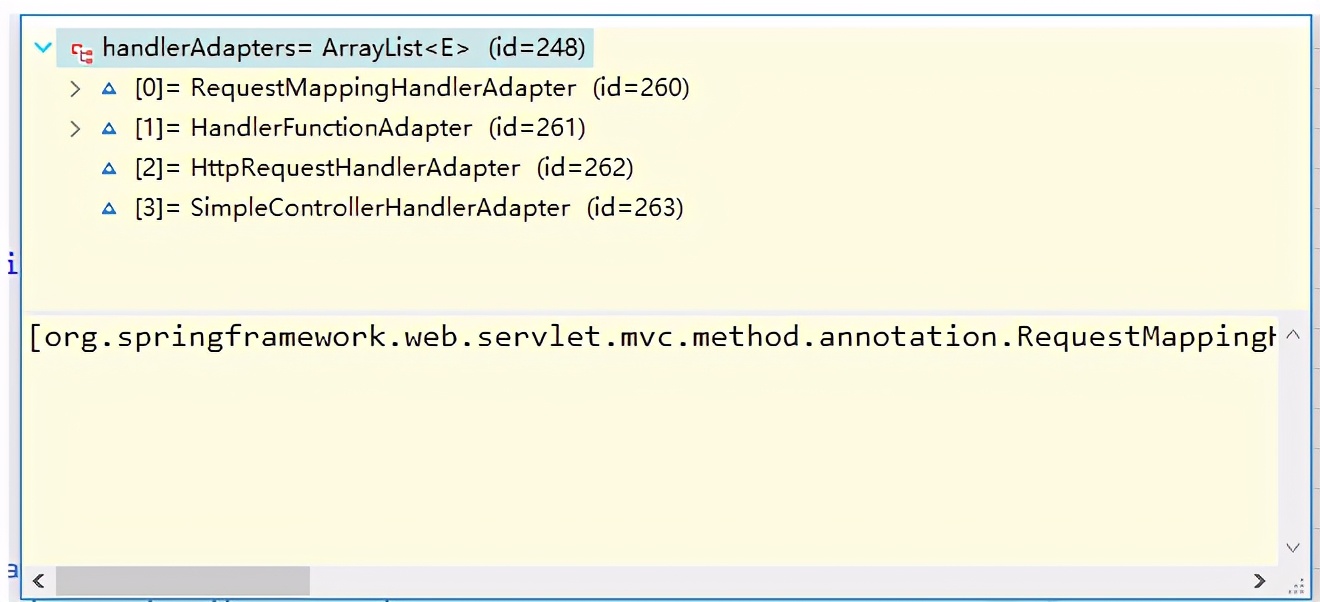
这里会匹配到RequestMappingHandlerAdapter:
看看是怎么匹配上的:
2.1 进入adapter.supports(handler)方法
@Override
public final boolean supports(Object handler) {
return (handler instanceof HandlerMethod && supportsInternal((HandlerMethod) handler));
}这里关心子类(RequestMappingHandlerAdapter)的supportsInternal方法:
@Override
protected boolean supportsInternal(HandlerMethod handlerMethod) {
return true;
}直接返回了true。到此这里就确定了HandlerAdapter
- 返回到DispatcherServlet
接着执行如下代码:
if (!mappedHandler.applyPreHandle(processedRequest, response)) {
return;
}3.1 进入applyPreHandle方法
boolean applyPreHandle(HttpServletRequest request, HttpServletResponse response) throws Exception {
HandlerInterceptor[] interceptors = getInterceptors();
if (!ObjectUtils.isEmpty(interceptors)) {
for (int i = 0; i < interceptors.length; i++) {
HandlerInterceptor interceptor = interceptors[i];
if (!interceptor.preHandle(request, response, this.handler)) {
triggerAfterCompletion(request, response, null);
return false;
}
this.interceptorIndex = i;
}
}
return true;
}这里开始执行拦截器的pre方法。如果某个拦截器返回了false,那么会直接触发对应的triggerAfterCompletion方法。
同时直接返回,整个请求就结束了,我们的Controller是肯定就不会执行的了。
当所有的interceptor都返回true时,继续往下执行
3.2 执行实际的调用
mv = ha.handle(processedRequest, response, mappedHandler.getHandler());
进入此方法:
public final ModelAndView handle(HttpServletRequest request, HttpServletResponse response, Object handler)
throws Exception {
return handleInternal(request, response, (HandlerMethod) handler);
}继续进入handleInternal方法:
protected ModelAndView handleInternal(HttpServletRequest request,
HttpServletResponse response, HandlerMethod handlerMethod) throws Exception {
ModelAndView mav;
checkRequest(request);
// Execute invokeHandlerMethod in synchronized block if required.
if (this.synchronizeOnSession) {
HttpSession session = request.getSession(false);
if (session != null) {
Object mutex = WebUtils.getSessionMutex(session);
synchronized (mutex) {
mav = invokeHandlerMethod(request, response, handlerMethod);
}
}
else {
// No HttpSession available -> no mutex necessary
mav = invokeHandlerMethod(request, response, handlerMethod);
}
}
else {
// No synchronization on session demanded at all...
mav = invokeHandlerMethod(request, response, handlerMethod);
}
if (!response.containsHeader(HEADER_CACHE_CONTROL)) {
if (getSessionAttributesHandler(handlerMethod).hasSessionAttributes()) {
applyCacheSeconds(response, this.cacheSecondsForSessionAttributeHandlers);
}
else {
prepareResponse(response);
}
}
return mav;
}这里最终进入:
// No synchronization on session demanded at all... mav = invokeHandlerMethod(request, response, handlerMethod);
进入invokeHandlerMethod方法:
protected ModelAndView invokeHandlerMethod(HttpServletRequest request,
HttpServletResponse response, HandlerMethod handlerMethod) throws Exception {
ServletWebRequest webRequest = new ServletWebRequest(request, response);
try {
...
invocableMethod.invokeAndHandle(webRequest, mavContainer);
...
return getModelAndView(mavContainer, modelFactory, webRequest);
}
finally {
webRequest.requestCompleted();
}
}看这个类的核心方法invokeAndHandle:
public void invokeAndHandle(ServletWebRequest webRequest, ModelAndViewContainer mavContainer,
Object... providedArgs) throws Exception {
Object returnValue = invokeForRequest(webRequest, mavContainer, providedArgs);
setResponseStatus(webRequest);
if (returnValue == null) {
if (isRequestNotModified(webRequest) || getResponseStatus() != null || mavContainer.isRequestHandled()) {
disableContentCachingIfNecessary(webRequest);
mavContainer.setRequestHandled(true);
return;
}
}
else if (StringUtils.hasText(getResponseStatusReason())) {
mavContainer.setRequestHandled(true);
return;
}
mavContainer.setRequestHandled(false);
Assert.state(this.returnValueHandlers != null, "No return value handlers");
try {
this.returnValueHandlers.handleReturnValue(
returnValue, getReturnValueType(returnValue), mavContainer, webRequest);
}
catch (Exception ex) {
if (logger.isTraceEnabled()) {
logger.trace(formatErrorForReturnValue(returnValue), ex);
}
throw ex;
}
}继续进入handleReturnValue方法最终进入的方法handleReturnValue:
protected <T> void writeWithMessageConverters(@Nullable T value, MethodParameter returnType,
ServletServerHttpRequest inputMessage, ServletServerHttpResponse outputMessage)
throws IOException, HttpMediaTypeNotAcceptableException, HttpMessageNotWritableException {
Object body;
Class<?> valueType;
Type targetType;
// ...
if (selectedMediaType != null) {
selectedMediaType = selectedMediaType.removeQualityValue();
for (HttpMessageConverter<?> converter : this.messageConverters) {
GenericHttpMessageConverter genericConverter = (converter instanceof GenericHttpMessageConverter ?
(GenericHttpMessageConverter<?>) converter : null);
if (genericConverter != null ?
((GenericHttpMessageConverter) converter).canWrite(targetType, valueType, selectedMediaType) :
converter.canWrite(valueType, selectedMediaType)) {
body = getAdvice().beforeBodyWrite(body, returnType, selectedMediaType,
(Class<? extends HttpMessageConverter<?>>) converter.getClass(),
inputMessage, outputMessage);
if (body != null) {
Object theBody = body;
LogFormatUtils.traceDebug(logger, traceOn ->
"Writing [" + LogFormatUtils.formatValue(theBody, !traceOn) + "]");
addContentDispositionHeader(inputMessage, outputMessage);
if (genericConverter != null) {
genericConverter.write(body, targetType, selectedMediaType, outputMessage);
}
else {
((HttpMessageConverter) converter).write(body, selectedMediaType, outputMessage);
}
}
else {
if (logger.isDebugEnabled()) {
logger.debug("Nothing to write: null body");
}
}
return;
}
}
}
if (body != null) {
Set<MediaType> producibleMediaTypes =
(Set<MediaType>) inputMessage.getServletRequest()
.getAttribute(HandlerMapping.PRODUCIBLE_MEDIA_TYPES_ATTRIBUTE);
if (isContentTypePreset || !CollectionUtils.isEmpty(producibleMediaTypes)) {
throw new HttpMessageNotWritableException(
"No converter for [" + valueType + "] with preset Content-Type '" + contentType + "'");
}
throw new HttpMediaTypeNotAcceptableException(this.allSupportedMediaTypes);
}
}这里会遍历系统中的HttpMessageConverter, 如果匹配了(我们Controller返回值类型是否能够写/序列化)那么就会在返回内容转换前,执行相应的ResponseBodyAdvice 通知
body = getAdvice().beforeBodyWrite(body, returnType, selectedMediaType,
(Class<? extends HttpMessageConverter<?>>) converter.getClass(),
inputMessage, outputMessage);beforeBodyWrite方法:
public Object beforeBodyWrite(@Nullable Object body, MethodParameter returnType, MediaType contentType,
Class<? extends HttpMessageConverter<?>> converterType,
ServerHttpRequest request, ServerHttpResponse response) {
return processBody(body, returnType, contentType, converterType, request, response);
}processBody方法:
private <T> Object processBody(@Nullable Object body, MethodParameter returnType, MediaType contentType,
Class<? extends HttpMessageConverter<?>> converterType,
ServerHttpRequest request, ServerHttpResponse response) {
for (ResponseBodyAdvice<?> advice : getMatchingAdvice(returnType, ResponseBodyAdvice.class)) {
if (advice.supports(returnType, converterType)) {
body = ((ResponseBodyAdvice<T>) advice).beforeBodyWrite((T) body, returnType,
contentType, converterType, request, response);
}
}
return body;
}大体上到此就是把业务方法(Controller)和ResponseBodyAdvice 及HttpMessageConverter执行完了。
3.3 实际的调用结束后继续执行对应拦截器的post方法
回到DispatcerServlet中:
mappedHandler.applyPostHandle(processedRequest, response, mv);processDispatchResult(processedRequest, response, mappedHandler, mv, dispatchException);processDispatchResult 开始处理mv(ModelAndView)不为空的情况及拦截器的triggerAfterCompletion方法。
到此基本上整个请求就结束了。
给个关注呗
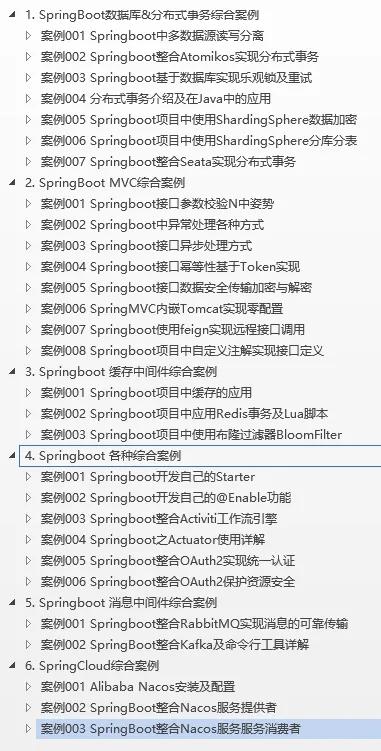

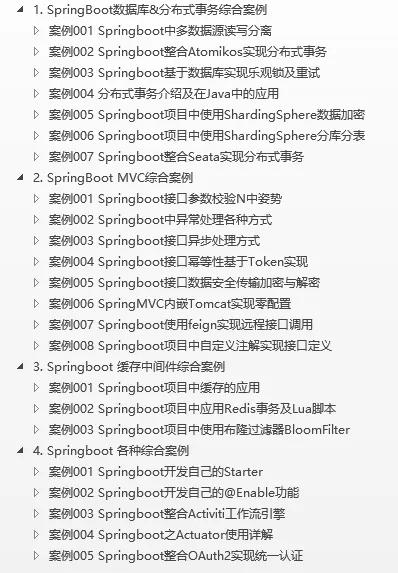
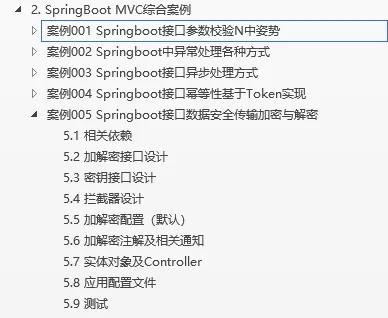
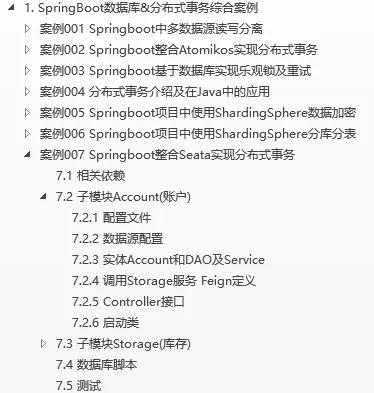

























 928
928











 被折叠的 条评论
为什么被折叠?
被折叠的 条评论
为什么被折叠?








